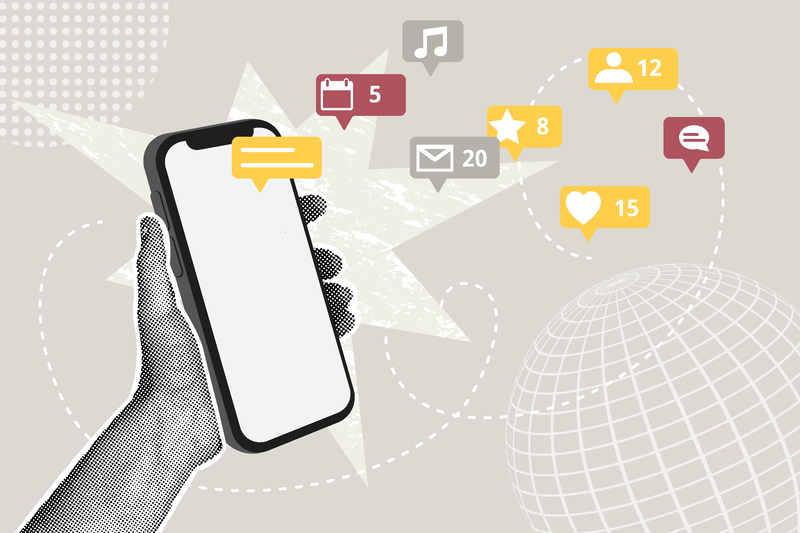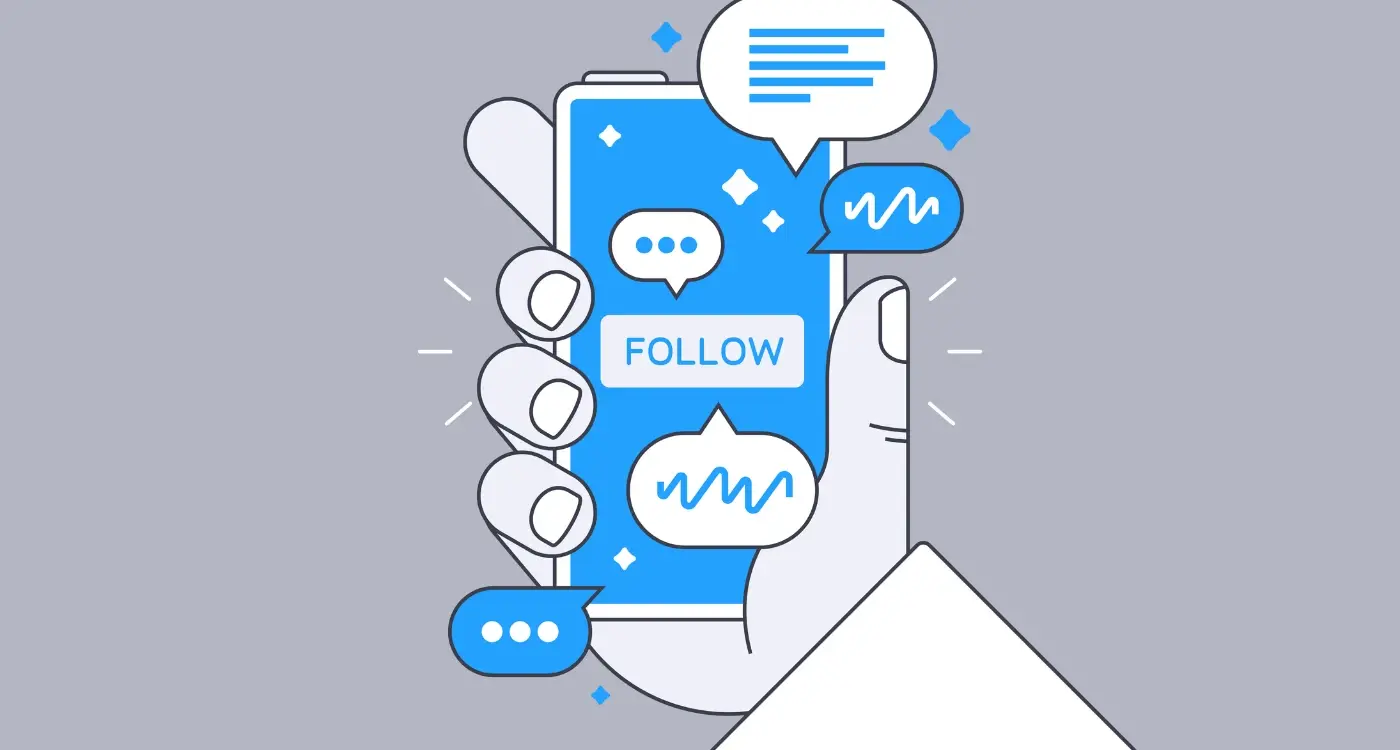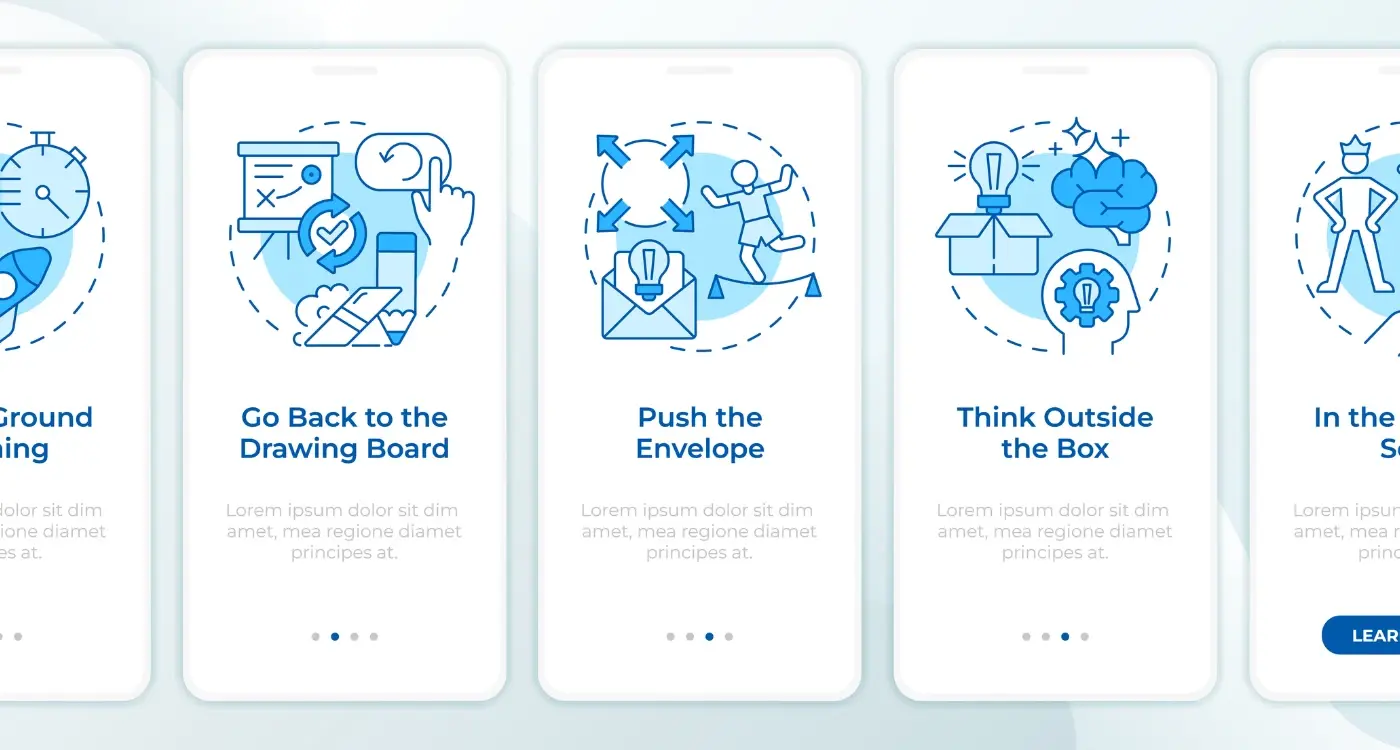How Do You Build A Social Media App That People Will Use?
Every minute, people send over 65,000 photos on Instagram, post 350,000 tweets, and upload 500 hours of video to YouTube. That's a staggering amount of social interaction happening through mobile apps—and it shows just how hungry people are for connection. But here's the thing that catches most people off guard: for every successful social media app you know, there are thousands that launched with high hopes and faded into obscurity within months.
Building a social media app isn't just about creating another platform where people can share photos or send messages. The mobile app space is absolutely saturated with social platforms, which means your app needs to solve a real problem or fill a genuine gap in people's lives. User acquisition has become incredibly competitive, and platform adoption depends on whether you can give people something they can't get elsewhere.
The graveyard of failed social apps is littered with platforms that had great features but failed to understand what their users actually wanted
This guide will walk you through every step of creating a social media app that people will actually download, use, and recommend to their friends. We'll cover everything from understanding your audience and planning your features, to designing an experience that keeps people coming back. Most importantly, we'll explore the strategies that separate successful social apps from the ones that never find their footing.
Understanding Your Target Audience
When I'm working with clients on social media apps, one of the biggest mistakes I see is people building for everyone—and that's exactly how you end up with an app that nobody wants to use. You need to know who you're building for before you write a single line of code.
Think about it this way: would you create the same app for teenagers as you would for busy parents? Of course not. Teenagers might want flashy features and the latest trends, whilst parents probably care more about staying connected with family and friends without all the noise.
Who Are Your Users Really?
Start by asking yourself some basic questions about your future users. How old are they? What do they do for work? What frustrates them about current social media apps? I always tell my clients to be specific—"people who like social media" isn't specific enough. "University students who want to share photos with their close friends without their parents seeing" is much better.
What Problems Are You Solving?
Your target audience should have a real problem that your app can solve. Maybe they're tired of algorithms hiding their friends' posts, or perhaps they want a safer space to share content. Whatever it is, make sure it's something people actually care about—not just something you think they should care about. The most successful social media apps I've worked on have always solved a genuine problem for a specific group of people.
Research and Planning Your Social Media App
Right, so you've got your target audience figured out—brilliant! Now comes the part where many mobile app projects either soar or crash spectacularly: the research and planning phase. I've seen too many promising social media apps fail because someone skipped this bit or rushed through it thinking they could wing it.
Start by studying your competition ruthlessly. Download every similar app you can find and use them daily for at least a week. Note what frustrates you, what keeps you coming back, and what makes you want to delete them immediately. This isn't about copying—it's about understanding what works and what doesn't in the real world.
Technical Planning That Actually Matters
Next, you need to map out your technical requirements. Will your app need real-time messaging? Video capabilities? Push notifications? Each feature affects your budget, timeline, and user acquisition strategy later on. Platform adoption depends heavily on performance, so plan your tech stack carefully.
- Choose between native development (iOS/Android separately) or cross-platform solutions
- Plan your backend infrastructure for user data and content storage
- Consider scalability—can your system handle 10,000 users? 100,000?
- Budget for ongoing maintenance and updates
Create a detailed feature priority list. Mark features as 'must-have for launch', 'nice-to-have', and 'future updates'. This prevents scope creep and keeps your mobile app development focused.
Validation Before You Build
Before writing a single line of code, validate your concept with real people. Create mockups or wireframes and show them to potential users. Their feedback will save you months of development time and thousands in costs. Remember, platform adoption starts with solving real problems that people actually have.
Designing an Engaging User Experience
Right, let's talk about the bit that makes or breaks your social media app—the user experience. I've seen brilliant app concepts completely tank because nobody thought about how people would actually use them. Your UX isn't just about making things look pretty; it's about making your app feel natural and intuitive from the moment someone opens it.
The first few seconds are absolutely critical. When someone downloads your app, they're not going to spend ages figuring out how it works. They want to jump straight in and start connecting with people. Your onboarding process needs to be quick, clear, and get users to that "aha!" moment as fast as possible.
Core UX Principles for Social Apps
- Keep navigation simple—three taps maximum to reach any feature
- Make sharing content feel effortless, not like a chore
- Use familiar icons and gestures that people already know
- Provide instant feedback when users interact with content
- Design for one-handed use—most people scroll with their thumbs
Think about the apps you use daily. They probably don't make you think about where to tap next, right? That's what we're aiming for. Your users should be focused on connecting with their friends, not wrestling with your interface.
Building Core Features That Matter
Right, let's talk about the meat and potatoes of your social media mobile app—the features that'll make or break your chances of successful platform adoption. I've watched countless apps fail because they tried to do everything at once, and others succeed by nailing just three or four key features brilliantly.
Start with your core loop—what's the main action people will do in your app? Post content, comment, share, like? Whatever it is, make it smooth as silk. Then think about discovery; people need to find interesting content and other users easily. Search functionality isn't glamorous, but it's the backbone of user acquisition because it helps people find what they're looking for quickly.
The Non-Negotiables
User profiles are your foundation—people want to express themselves and see who they're connecting with. Notifications come next; they're your lifeline back to users who might otherwise forget about your app. But here's the thing—don't overwhelm them with notifications. A barrage of pointless notifications will have people deleting your mobile app faster than you can say "engagement".
The best social media apps feel like they're reading your mind, showing you exactly what you want to see when you want to see it
Content creation tools matter too, but keep them simple initially. You can always add fancy filters and editing features later once you've proven your core concept works and people actually want to use your app.
Testing and Launching Your Mobile App
Right, so you've built your social media app and you're probably itching to get it out there. But hold on a minute—launching without proper testing is like driving with your eyes closed. Trust me, I've seen apps crash and burn because developers skipped this step or rushed through it.
Testing isn't just about finding bugs (though that's important too). It's about making sure your app actually works the way real people expect it to. Beta testing with a small group of users will show you things you never considered. They'll tap buttons you didn't think they'd tap, try to share content in ways you didn't plan for, and generally break your app in creative ways.
Pre-Launch Testing Checklist
- Test core features like posting, commenting, and sharing
- Check performance on different devices and operating systems
- Verify push notifications work correctly
- Test user registration and login flows
- Ensure privacy settings function properly
- Check app store compliance requirements
Once you're confident everything works smoothly, it's time to submit to the app stores. Apple's review process typically takes 1-3 days, whilst Google Play can approve apps within hours. Have your app store listings ready—good screenshots, compelling descriptions, and the right keywords will help people find your app once it's live.
Growing Your User Base Through Strategic User Acquisition
Right, so you've built your social media app and it's working brilliantly—but now comes the tricky bit. Getting people to actually download and use it! After working on countless mobile app launches, I can tell you that user acquisition is where many brilliant apps stumble. It's not enough to build something amazing; you need to get it in front of the right people at the right time.
The biggest mistake I see developers make is thinking that if they build it, users will just appear. That's not how it works, unfortunately. You need a proper strategy that combines organic growth with paid acquisition channels. Start with your existing network—friends, family, colleagues—and get them using your app first. These early users are gold because they'll give you honest feedback and help you iron out any issues before you scale up.
Focus on Quality Over Quantity
Don't get caught up in vanity metrics like total downloads. What matters is active users who actually engage with your platform. I've seen apps with millions of downloads but terrible retention rates—that's a recipe for disaster. Instead, focus on acquiring users who fit your target audience profile and are likely to stick around. Platform adoption happens when users find real value in what you're offering, not when you trick them into downloading through misleading ads.
Start small and local. Test your user acquisition strategies in a specific geographic area or demographic before expanding. This approach lets you refine your messaging and understand what resonates with your audience without burning through your entire marketing budget.
Building Momentum Through Multiple Channels
The most successful mobile app launches use a mix of acquisition channels. App store optimisation is your foundation—make sure your app title, description, and screenshots clearly communicate your value proposition. Social media marketing works particularly well for social apps because you can demonstrate the product in action. Consider influencer partnerships, but choose people whose audience genuinely matches your target users rather than just going for the biggest follower count.
Keeping Users Engaged and Driving Platform Adoption
Getting people to download your social media app is just the beginning—keeping them coming back is where the real challenge starts. I've worked with countless apps over the years, and the ones that succeed are those that understand engagement isn't a one-time thing; it's an ongoing relationship you build with your users.
The secret lies in creating what I call "habit loops"—patterns that make opening your app feel natural rather than forced. Push notifications play a huge role here, but they need to be smart about it. Nobody wants to be bombarded with meaningless alerts every five minutes!
Building Daily Habits
Your app needs to give users reasons to return daily. This could be through streaks, daily challenges, or fresh content that appears regularly. The key is making sure there's always something new waiting for them when they open the app.
Smart Notification Strategy
Here's what works best for driving engagement:
- Personalised content recommendations based on user behaviour
- Social triggers like friend activity or mentions
- Time-sensitive opportunities that create urgency
- Achievement celebrations that make users feel accomplished
The apps that thrive are those that become part of their users' daily routine. Focus on creating value with every interaction, and the engagement will follow naturally. Remember, a smaller group of highly engaged users is worth more than thousands of people who download once and never return.
Conclusion
Building a social media mobile app that people will actually use isn't just about having a brilliant idea—it's about understanding your users, planning properly, and executing well. I've seen countless apps fail because their creators skipped the research phase or rushed straight to development without really thinking about what their audience wanted.
The apps that succeed are the ones that solve real problems for real people. They make social interaction easier, more fun, or more meaningful. They don't try to be everything to everyone; they focus on doing a few things really well. Getting your core features right matters more than having dozens of mediocre ones.
User acquisition and platform adoption don't happen by accident. They're the result of careful planning, smart marketing, and most importantly, creating something people genuinely want to share with their friends. Your app needs to earn its place on someone's phone—and that's getting harder every day as competition increases.
The mobile app market is tough, but there's still room for great ideas executed well. If you've got a vision for a social media app that could make people's lives better, don't let the challenges put you off. Just make sure you do your homework first, test early and often, and never stop listening to your users.
Share this
Subscribe To Our Learning Centre
You May Also Like
These Related Guides

What Makes a Social Media App Actually Successful?

What Features Do Social Media Apps Need to Compete?



